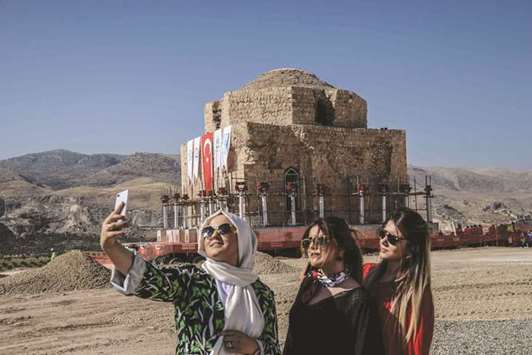It took two hours and 15 minutes to move the 1,200-tonne hammam in the town of Hasankeyf, the Directorate for Cultural Heritage and Museums confirmed to DPA.
The foundation dates back to the 12th century Artuqid era, but most of the hammam was rebuilt during the Ottoman Empire.
The hammam was transported by a 256-wheeler flatbed lorry to a so-called cultural park 3km away, state news agency Anadolu reported.
Once the Illisu dam is completed, the 300sq km reservoir created is expected to flood the archaeologically important town of Hasankeyf.
Construction on the 1,820m-long, 135m-high dam began in August 2006 to harness the waters of the Tigris river.
Turkey’s then prime minister, and now president, Recep Tayyip Erdogan has justified the project, saying that two-thirds of the country’s energy potential remained unexploited.
The project, some 50km from the Syrian border, means resettling more than 15,000 people from areas due to be flooded.
Archaeologists have long warned that the project will destroy a range of mediaeval Islamic buildings.
The project has met strong local and international opposition.
It was previously financed by loans from Germany, Austria and Switzerland, although the three withdrew their support in July 2009 citing environmental concerns.
It is part of the Southeastern Anatolia Project, under which several dams are to be built on the Euphrates and Tigris rivers.

